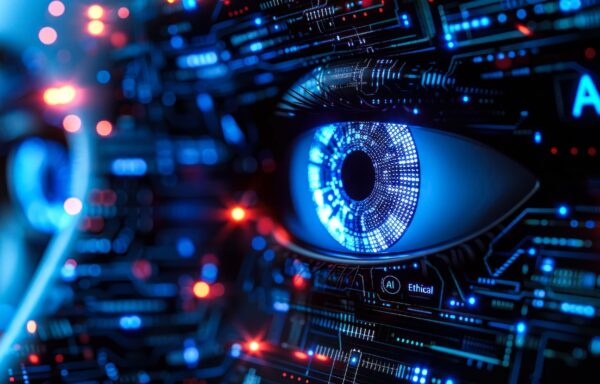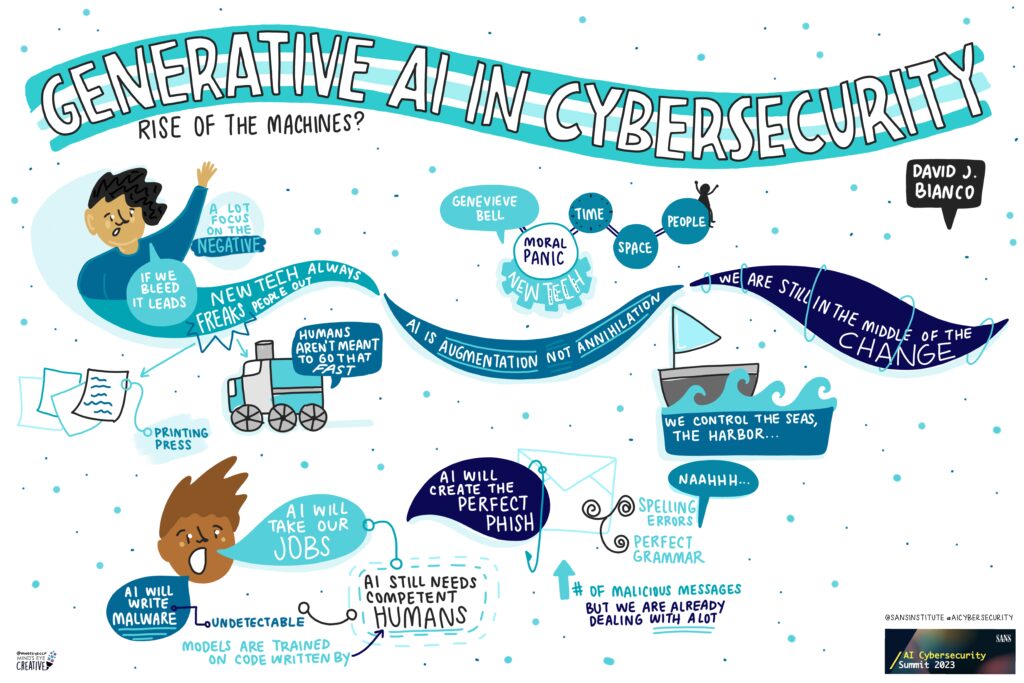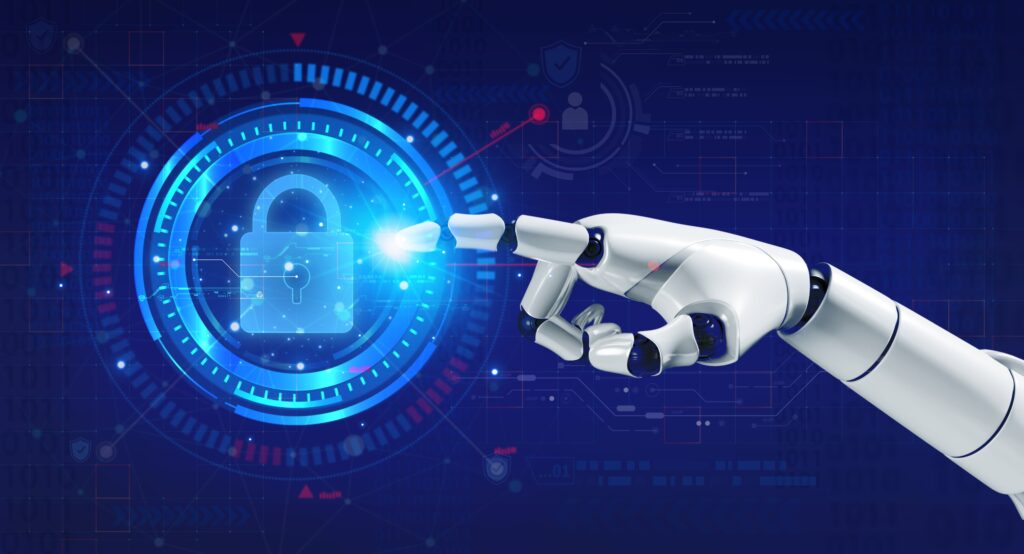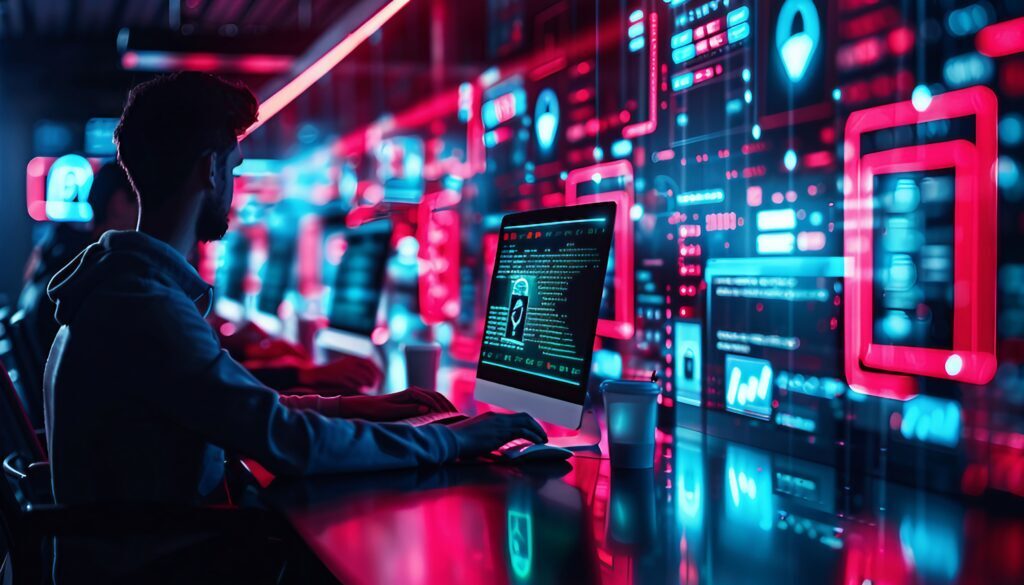AI Cybersecurity: 6 Key Insights to Build a Robust Defense in the Age of Artificial Intelligence

Introduction: Understanding AI cybersecurity
The word “AI” is today’s buzz word, you hear it everywhere you turn. This technology holds the promise of efficiency and innovation. Artificial Intelligence is literally transforming the world and redefining the boundaries across every walk of life, including the world of cybersecurity.
In the realm of cybersecurity, AI-driven cyberattacks are transforming the landscape. Malicious actors are leveraging sophisticated AI techniques to breach even the most resilient cybersecurity defenses. Cybersecurity professionals report this year that 85% of cyberattacks are powered by generative AI, according to Deep Instinct’s fourth edition report.
It’s time to reassess cyber threats through an AI lens

In order to navigate the challenges of AI, businesses need to start thinking about fighting AI with AI. Organizations across all industries face a dual challenge: they must effectively leverage AI to enhance their security programs while also defending against increasingly sophisticated cyber threats driven by AI advancements. Which means, reassessing your cybersecurity strategy with robust AI programs is vital and starts with a clear understanding of what we’re trying to secure and why.
In this blog, let’s explore the key principles of AI cybersecurity, uncovering tips on how to build a robust defense strategy that not only shields your organization from AI-related threats but also empowers your business to thrive in this new technological frontier. We’ll examine how to align AI into your cybersecurity strategy with business goals, optimize your technology portfolio for AI-driven security, and foster a culture where AI risk management and business enablement go hand in hand. Finally, we’ll discuss how AI can be both a powerful ally and a potential threat in your cybersecurity efforts. Let’s dive right in, shall we.
Understanding the scope of AI in cybersecurity

Before delving into the intricacies of AI cybersecurity strategies, it is paramount to achieve a comprehensive understanding of the digital assets we aim to safeguard and the rationale behind it. AI-powered cyber threats now shape the current landscape, as machines initiate and adapt them in response to configuration changes. In the realm of AI cybersecurity, this requires identifying:
- AI technologies and models deployed within your organization
- Data used to train and operate these AI systems
- Infrastructure that supports AI operations
- Intellectual property related to AI development
- Customer data processed by AI technologies
The “why” of AI security solutions are equally important. We’re securing these assets to:
- Protect sensitive information from AI-powered attacks and unauthorized access
- Maintain the integrity and reliability of AI-driven decisions
- Ensure compliance with emerging AI regulations and data protection laws
- Safeguard your organization’s competitive advantage of AI capabilities
- Maintain trust with customers and stakeholders in an AI-driven world
By clearly defining the scope and objectives of your cybersecurity efforts, you can develop targeted and effective strategies for security gaps that will align with your business objectives and at the same time address the unique challenges posed by artificial intelligence.
Six key AI cybersecurity insights

1. Align AI security strategy with business goals: Secure what matters most
Every organization has unique assets, whether it’s sensitive customer data, intellectual property, or critical infrastructure. The initial step in establishing a strong AI cybersecurity program is to identify what requires protection and the reasons behind it. This process entails comprehending your organization’s mission, assessing the value of its assets, and evaluating the potential consequences of a security breach, particularly those involving AI.
In the context of AI in cybersecurity, evaluate how you integrate AI systems into your business processes and identify the potential vulnerabilities they introduce. AI algorithms that process large volumes of data can be prime targets for attackers looking to manipulate outcomes or steal sensitive information. An AI-driven cybersecurity strategy aligned with your business focuses on protecting the most critical assets while supporting overall business objectives.
Key takeaway: Align your AI cybersecurity efforts with your business goals, and prioritize protecting the assets that matter most. In an AI-driven world, this includes securing systems with AI and the data they process.
2. Optimize your security tools : Balance innovation with AI cybersecurity
As organizations adopt AI, the complexity of their security tools increases. While AI can enhance cybersecurity by automating threat detection and response, it also introduces new risks if not properly managed. A well-optimized technology portfolio balances innovation with AI cybersecurity, ensuring effective and safe use of AI and other technologies.
When it comes to AI cybersecurity, it’s essential to evaluate the security implications of the security solutions itself. Are your AI models fortified against adversarial attacks? Are you using AI to enhance your security posture, such as by automating the identification of threats or anomalies? Optimizing your security stack means leveraging AI to improve cybersecurity while addressing the specific risks it may introduce.
Key takeaway: Enhance your cybersecurity efforts with AI, but optimize your security technology tools to address the unique risks that AI presents. Regularly evaluate and update your tools with third-party risk assessments to maintain a strong AI fortified cybersecurity posture.
3. Cultivate a culture of risk ownership and business enablement in AI cybersecurity
A robust AI cybersecurity program isn’t just about technology—it’s also about the people and processes. In an organization where risk ownership coexists with business enablement, every employee understands their role in protecting the company’s assets. This culture is critical in a world where AI can amplify both the benefits and risks of digital transformation.
Creating a culture of cybersecurity requires ongoing education and awareness. Train employees to recognize common threats and understand the specific risks associated with AI. For instance, they should learn how to identify AI manipulation used in convincing phishing attacks or deepfakes and how to mitigate these risks effectively.
Encouraging collaboration between cybersecurity teams and other departments is also crucial. When AI cybersecurity is seen as a business enabler rather than a barrier, employees are more likely to take ownership of their role in maintaining a secure environment.
Key takeaway: Educate employees on AI and cloud security risks to foster a culture of risk ownership. Encourage collaboration across departments for better business enablement. A security-conscious culture is a key component of a robust cybersecurity program.
4. The role of AI to enhance cybersecurity
While AI presents new risks, it also offers powerful tools for enhancing cybersecurity. AI automates various aspects of security, including threat detection and incident response. AI analyzes large data volumes with deep learning, quickly identifying patterns and anomalies that indicate security breaches, often more accurately than human analysts.
For example, AI-powered security systems can monitor network traffic for signs of unusual activity, or other cyber threats such as data exfiltration or unauthorized access attempts. Machine learning algorithms can be trained to recognize the behaviors of known threats and flag them for further investigation. In the realm of identity and access management (IAM), AI can help enforce policies by automatically adjusting access controls based on user behavior and risk factors.
However, relying on AI alone is not enough. It’s essential to combine AI with human expertise to ensure that security measures are effective and adaptable. AI should be seen as a tool that augments, rather than replaces, the human intelligence and the capabilities of your cybersecurity team.
Key takeaway: Utilize AI to strengthen your cybersecurity program, while recognizing that human expertise remains irreplaceable. AI can actively identify and respond to threats, but it should complement other security measures and human judgment.
5. Protect your organization from AI-driven threats
As AI becomes increasingly prevalent, the emergence of AI-driven threats is on the rise. Cybercriminals are increasingly using AI to create sophisticated attacks. They generate phishing emails that closely resemble legitimate ones and develop AI-powered malware that adapts to avoid detection. Protecting your organization from these threats requires a proactive and comprehensive AI cybersecurity approach.
One effective strategy is to use AI to combat AI. Deploying AI-powered cybersecurity solutions will help organizations detect and respond to AI-driven threats more quickly and accurately. For instance, AI can be used to analyze email patterns and identify phishing attempts, or to monitor network activity for signs of AI-powered malware.
Another important consideration is the security of your machine learning AI systems themselves. AI models are vulnerable to attacks that manipulate their inputs or outputs, leading to incorrect or harmful decisions. Implementing robust AI cybersecurity measures, such as adversarial testing and model validation, is essential to prevent these types of attacks.
Key takeaway: Protect your organization from AI-driven threats by using AI-powered cybersecurity solutions and securing your AI systems. A proactive approach to threat intelligence is essential to staying ahead of emerging threats.
6. Keep up with emerging best practices in AI cybersecurity
As the field of AI cybersecurity continues to evolve, so too do the best practices for protecting your organization from cyber attacks. Merging traditional cybersecurity wisdom with emerging practices, you can build a program that is both sound and adaptable.
One emerging practice is the use of AI to improve data security. AI helps organizations understand and manage their data more effectively by identifying sensitive information and ensuring proper protection. For example, AI automatically classifies data according to its sensitivity and applies appropriate security controls, such as encryption or access restrictions, to safeguard sensitive information.
Another best practice is the integration of AI into security operations. Incorporating AI into your security operations center (SOC), will enhance your ability to detect and respond to threats in real time. AI can help prioritize alerts, reduce false positives, and provide actionable insights to your security teams and analysts.
Key takeaway: Stay ahead of the curve by adopting emerging best practices in cybersecurity. Integrate AI into your data security and network security operations to build a more resilient and adaptable cybersecurity program.
Conclusion: Building a resilient AI cybersecurity program for the AI era

In conclusion, a robust AI cybersecurity program requires a clear understanding of what you’re trying to secure and why. Align your AI cybersecurity strategy with your business goals, optimize your technology portfolio, foster a culture of risk ownership, and leverage AI to enhance security. Then you and your security team are better prepared to protect your organization from the unique challenges that artificial intelligence presents.
As AI continues to evolve, so too must your cybersecurity practices. Staying informed about emerging cybersecurity threats and best practices, and by continuously adapting your approach, you can ensure your organization is fortified in an increasingly AI-driven world.
Call to Action: To learn more about how Cyber Defense Group can help you build a robust cybersecurity program that will protect your organization from AI-driven threats, contact us today
